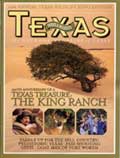
Following Procedure
By Herman W. Brune
Taking the time to practice before the season opens will add to your enjoyment in the field.
The old woodsman slips through the stunted trees, rocks and cacti and eases toward the ridge overlooking the Rio Grande. His steps are silent. He ducks limbs and avoids snagging branches and thorns. The wildlife photographer he is guiding wheezes and crunches up the incline as though his boots are made of concrete.
The guide stops on the rim and observes the Chihuahuan Desert. A nearby tree oozes sap from fresh claw marks. Several large rocks have been moved from their half-buried resting place, a dead stump has been pried apart and there is a pile of reddish, jellied droppings. He sits down; his client collapses.
The guide points to a saddle in the ridgeline several miles away. “The Mexican black bear we’re following is going over yonder,” he says. “We need to sneak over there and wait.”
The photographer is exasperated.
“How in the world can you know where that bear is going?” he asks.
The outdoorsman ponders this for a moment. “All of your everyday survival skills and deductive reasoning have evolved from the basic common sense we learned from observing nature,” he says. “For instance, one morning you can’t find your car keys. So, you begin backtracking yourself. You look through yesterday’s pants pockets. Then you look on the kitchen cabinet. You look on the nightstand, beside the TV and then start digging through the couch cushions. In desperation you go to your car, and there they are: in the ignition. You backtracked yourself by following your normal procedural pattern.
“Animals also have procedural patterns. Trackers should know the habits of the animals they’re hunting, and be open-eyed for clues. An animal’s activities involve eating, sleeping, procreation and, sometimes, migration or hibernation. So it helps to know what different species desire on their buffet, when they’re breeding and whether they seek shelter to rest or prefer open ground. Predators often rest in concealment, while deer would rather see danger coming from any direction.
“Deer nibble and browse on certain plants during varying seasons. Turkeys scratch, scattering leaves and upsetting the forest floor. Bears flip over rocks and bust open logs looking for grubs. It’s pointless to hunt deer on a pine ridge when they’re eating acorns in the creek bottom. If you’re looking for carnivorous predators, it’s pointless to search where there is no prey or food for prey.
“Animals mark their territory to warn intruders and to attract mates. It’s interesting that animals are always tracking other animals, whether they’re looking for food or to mate. Buck deer make rubs and scrapes. Mountain lions also make scrapes. These territorial markings, food supplies and bedding grounds provide a rough map of travel routines.
“Spotting sign or reading tracks comes with experience. The more time people spend studying nature, the more pieces they find to an ecosystem’s puzzle.”
The photographer shakes his head.
“So how do you know where that bear is going?” he asks.
“That old bear has a sweet tooth,” says the guide. “Did you look at those droppings? He’s been eating madrone berries and there’s a good patch of ’em on that saddle. Let’s go.”

